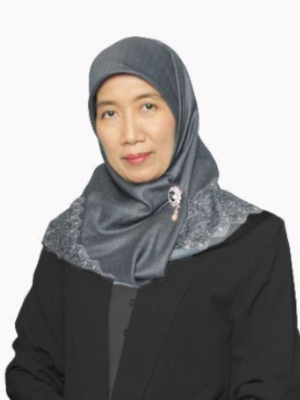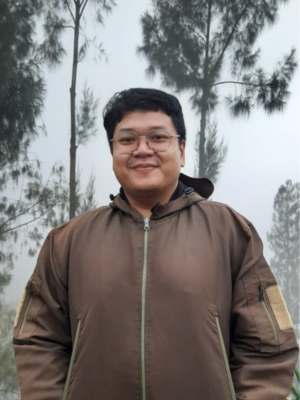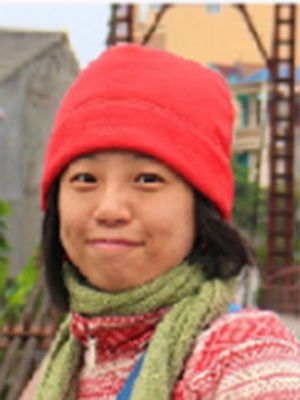Facial Aging Pattern of the Javanese Population in Indonesia: Contributions for Age Progression Analysis in Forensic Arts
Downloads
The pattern of facial aging helps put the perception of age into face approximation from the skull, making the face
more recognizable to the next of kin. The objective of this study is to determine the facial aging pattern of Javanese
people in Indonesia. This study utilized the descriptive quantitative method to identify the highest frequency of the
facial aging pattern variables according to its prominence (0 = Not visible; 1 = Slightly visible; and 2 = Clearly
visible). This study involved 50 male and 50 female samples of the Javanese population. Each sexed samples were
divided into two age-based groups: 40-44 and 45-49. The wrinkles on males and females aged 40-44 are mostly
slightly or not visible. In the 45-49 age group, the wrinkles are visible on the forehead, eyes, and cheeks. Sex
differences are found in the forehead and cheek grooves, with males having deeper wrinkles. Premature aging of the
male samples might be caused by longer working hours and heavier smoking habits. Aside from sex and gender,
ancestry also contributes to a unique aging pattern of the Javanese, differentiating them from other populations. The
complex interaction between both sociocultural and biological factors is significant in forming a certain pattern of
facial skin aging in different populations and sexes. Aside from its theoretical contribution to studies on human
biological variations, this study can be referenced to depict more accurate and appropriate facial features in forensic
cases that require facial approximations, especially those involving the Javanese people and the general Indonesian
population.
Aithal, S. (2021). A review study on effects of air pollution on the skin. Asian Journal of Research in Social Sciences and Humanities, 11(11), 443–449. https://doi.org/10.5958/2249-7315.2021.00258.6
Alaydrus, S. M., & Jauhari, M. A. (2024). Bioanthropological and biomechanical perspectives on skeletal senescence variation: a literature review. (JOINTS) Journal Orthopaedi and Traumatology Surabaya, 13(1), 24–34. https://doi.org/10.20473/joints.v13i1.2024.24-34
Alexis, A. F., Grimes, P., Boyd, C., Downie, J., Drinkwater, A., Garcia, J. K., & Gallagher, C. J. (2019). Racial and ethnic differences in self-assessed facial aging in women: results from a multinational study. Dermatologic Surgery, 45(12), 1635–1648. https://doi.org/10.1097/DSS.0000000000002237
Alexis, A. F., & Obioha, J. O. (2017). Ethnicity and aging skin. Journal of Drugs in Dermatology, 16(6), S77–S80. http://www.ncbi.nlm.nih.gov/pubmed/29028856
Amer, M., Farag, F., Amer, A., ElKot, R., & Mahmoud, R. (2018). Dermapen in the treatment of wrinkles in cigarette smokers and skin aging effectively. Journal of Cosmetic Dermatology, 17(6), 1200–1204. https://doi.org/10.1111/jocd.12748
Ana, R. F. (2017). Pola penuaan wajah laki-laki dan perempuan petani etnis Jawa Dataran Rendah di iklim tropis Indonesia, Kecamatan Pilangkenceng, Kabupaten Madiun, Jawa Timur. Repository Universitas Airlangga, 1–10. https://repository.unair.ac.id/67424/13/Fis.ANT.29.17 . Ana.p - JURNAL.pdf
Anwar, S. S., Smith, S. D., Pongprutthipan, M., Kim, J. Y., Yuan, C., & van Steensel, M. (2022). Preageing of the skin among Asian populations. JEADV Clinical Practice, 1(1), 1–8. https://doi.org/10.1002/jvc2.22
Bhat, D., & Patil, K. (2016). Human age estimation based on facial aging patterns. International Research Journal of Engineering and Technology, 3(7), 124–128. https://www.irjet.net/archives/V3/i7/IRJET-V3I722.pdf
Bhatt, N., Agrawal, S., & Mehta, K. (2019). Risk factors and self-perception for facial aging among Nepalese population. Journal of Cosmetic Dermatology, 18(6), 1794–1799. https://doi.org/10.1111/jocd.12885
Bravo, B., Penedo, L., Carvalho, R., Dal Vesco, C., Calomeni, M., Gapanowicz, D., Kemen, E., Paes, R., & Renke, G. (2024). Dermatological changes during menopause and HRT: what to expect? Cosmetics, 11(1), 9. https://doi.org/10.3390/cosmetics11010009
Burke, K. E. (2020). Environmental aging of the skin: new insights. Plastic and Aesthetic Research, 7(59), 1–16. https://doi.org/10.20517/2347-9264.2020.154
Chalise, H. N. (2019). Aging: basic concept. American Journal of Biomedical Science & Research, 1(1), 8–10. https://doi.org/10.34297/ajbsr.2019.01.000503
Chiu, C. L., Wang, Q., Ho, H. C., Zhang, J., & Zhao, F. (2019). Metrosexual trend in facial care products: analysis of factors that influence young Chinese men purchasing intention. Journal of Global Fashion Marketing, 10(4), 377–397. https://doi.org/10.1080/20932685.2019.1639527
Doncel Molinero, D., Ruiz Paulano, M., Rivas Ruiz, F., Blázquez Sánchez, N., de Gálvez Aranda, M. V., de Castro Maqueda, G., & de Troya Martín, M. (2022). Sun protection behaviour and sunburns in Spanish cyclists. Journal of Cancer Education, 37(4), 957–964. https://doi.org/10.1007/s13187-020-01906-y
Fatani, A. Z., Alshamrani, H. M., Alshehri, K. A., Almaghrabi, A. Y., Alzahrani, Y. A., & Abduljabbar, M. H. (2020). Awareness on the association between skin aging and smoking: impact on smoking quitting. Imam Journal of Apllied Sciences, 5(1), 33–37. https://doi.org/10.4103/ijas.ijas_17_19
Gasser, S., Heidemeyer, K., von Wolff, M., & Stute, P. (2021). Impact of progesterone on skin and hair in menopause – a comprehensive review. Climacteric, 24(3), 229–235. https://doi.org/10.1080/13697137.2020.1838476
Georgopoulos, M., Panagakis, Y., & Pantic, M. (2018). Modeling of facial aging and kinship: a survey. Image and Vision Computing, 80, 58–79. https://doi.org/10.1016/j.imavis.2018.05.003
Goodman, G. D., Kaufman, J., Day, D., Weiss, R., Kawata, A. K., Garcia, J. K., Santangelo, S., & Gallagher, C. J. (2019). Impact of smoking and alcohol use on facial aging in women: results of a large multinational, multiracial, crosssectional survey. Journal of Clinical and Aesthetic Dermatology, 12(8), 28–39. https://www.ncbi.nlm.nih.gov/pmc/articles/PMC6715121/pdf/jcad_12_8_28.pdf
Gupta, S., Gupta, V., Vij, H., Vij, R., & Tyagi, N. (2015). Forensic facial reconstruction: the final frontier. Journal of Clinical and Diagnostic Research, 9(9), 26–28. https://doi.org/10.7860/JCDR/2015/14621.6568
Hamer, M. A., Pardo, L. M., Jacobs, L. C., Ikram, M. A., Laven, J. S., Kayser, M., Hollestein, L. M., Gunn, D. A., & Nijsten, T. (2017). Lifestyle and physiological factors associated with facial wrinkling in men and women. Journal of Investigative Dermatology, 137(8), 1692–1699. https://doi.org/10.1016/j.jid.2017.04.002
Harry-Hernandez, S., Reisner, S. L., Schrimshaw, E. W., Radix, A., Mallick, R., Callander, D., Suarez, L., Dubin, S., Khan, A., & Duncan, D. T. (2020). Gender dysphoria, mental health, and poor sleep health among transgender and gender nonbinary individuals: a qualitative study in New York City. Transgender Health, 5(1), 59–68. https://doi.org/10.1089/trgh.2019.0007
Jang, S. I., Jung, Y., Lee, M., Kim, J., Kim, B. J., Suh, B., & Kim, E. (2022). Evaluation of changes in skin characteristics due to the poor quality of sleep caused by smartphone usage. Journal of Cosmetic Dermatology, 21(4), 1656–1665. https://doi.org/10.1111/jocd.14265
Jang, S. I., Lee, M., Han, J., Kim, J., Kim, A. R., An, J. S., Park, J. O., Kim, B. J., & Kim, E. (2019). A study of skin characteristics with long-term sleep restriction in Korean women in their 40s. Skin Research and Technology, 26(2), 193–199. https://doi.org/10.1111/srt.12797
Keaney, T. C. (2016). Aging in the male face: intrinsic and extrinsic factors. Dermatologic Surgery, 42(7), 797–803. https://doi.org/10.1097/DSS.0000000000000505
Laksmi, M. H., Winaya, K. K., Darmaputra, I. G. N., Rusyati, L. M. M., Indira, I. G. A. A. E., & Karmila, I. G. A. A. D. (2023). Smoking as a risk factor of low superoxide dismutase (SOD) levels and early aging in women aged 20 to 35 years. International Journal Of Scientific Advances, 4(1), 130–135. https://doi.org/10.51542/ijscia.v4i1.24
Lee, A., Garbutcheon-Singh, K. B., Dixit, S., Brown, P., & Smith, S. D. (2015). The influence of age and gender in knowledge, behaviors and attitudes towards sun protection: a cross-sectional survey of Australian outpatient clinic attendees. American Journal of Clinical Dermatology, 16(1), 47–54. https://doi.org/10.1007/s40257-014-0106-4
Lephart, E. D., & Naftolin, F. (2022). Factors influencing skin aging and the important role of estrogens and selective estrogen receptor modulators (SERMs). Clinical, Cosmetic and Investigational Dermatology, 15, 1695–1709. https://doi.org/10.2147/CCID.S333663
Lin, K., Liao, Y., Wei, M., & Sun, C. (2020). Comparative analysis of intrinsic skin aging between Caucasian and Asian subjects by slide‐free in vivo harmonic generation microscopy. Journal of Biophotonics, 13(4), e201960063. https://doi.org/10.1002/jbio.201960063
Lipa, K., Zając, N., Owczarek, W., Ciechanowicz, P., Szymańska, E., & Walecka, I. (2021). Does smoking affect your skin? Advances in Dermatology and Allergology, 38(3), 371–376. https://doi.org/10.5114/ada.2021.103000
Mesa Arango, A. C., Flórez-Muñoz, S. V., & Sanclemente, G. (2017). Mechanisms of skin aging. Iatreia, 30(2), 160–170. https://doi.org/10.17533/udea.iatreia.v30n2a05.160
Mitri, A., Lin, G., Waldman, R. A., & Grant-Kels, J. M. (2021). Effects of tobacco and vaping on the skin. Clinics in Dermatology, 39(5), 762–771. https://doi.org/10.1016/j.clindermatol.2021.05.004
Nanzadsuren, T., Myatav, T., Dorjkhuu, A., Ganbat, M., Batbold, C., Batsuuri, B., & Byamba, K. (2022). Skin aging risk factors: A nationwide population study in Mongolia risk factors of skin aging. PLoS ONE, 17(1 January). https://doi.org/10.1371/journal.pone.0249506
Oyetakin-White, P., Suggs, A., Koo, B., Matsui, M. S., Yarosh, D., Cooper, K. D., & Baron, E. D. (2015). Does poor sleep quality affect skin ageing? Clinical and Experimental Dermatology, 40(1), 17–22. https://doi.org/10.1111/ced.12455
Pinault, L., & Fioletov, V. (2017). Sun exposure, sun protection and sunburn among Canadian adults. Health Reports, 28(5), 12–19. http://www.ncbi.nlm.nih.gov/pubmed/28513819
Schmidlin, E. J., Steyn, M., Houlton, T. M. R., & Briers, N. (2018). Facial ageing in South African adult males. Forensic Science International, 289, 277–286. https://doi.org/10.1016/j.forsciint.2018.05.006
Simons, R. L., Ong, M. L., Lei, M. K., Klopack, E., Berg, M., Zhang, Y., Philibert, R., & Beach, S. S. R. (2021). Unstable childhood, adult adversity, and smoking accelerate biological aging among middle-age African Americans: similar findings for GrimAge and PoAm. Journal of Aging and Health, 0(0), 1–12. https://doi.org/10.1177/08982643211043668
Taylor, K. T. (2000). Forensic Art and Illustration (1st ed.). CRC Press.
Vashi, N. A., de Castro Maymone, M. B., & Kundu, R. V. (2016). Aging differences in ethnic skin. Journal of Clinical and Aesthetic Dermatology, 9(1), 31–38. http://www.ncbi.nlm.nih.gov/pubmed/26962390
Wilkinson, C. M. (2015). A review of forensic art. Research and Reports in Forensic Medical Science, 17. https://doi.org/10.2147/RRFMS.S60767
Windhager, S., Mitteroecker, P., Rupić, I., Lauc, T., Polašek, O., & Schaefer, K. (2019). Facial aging trajectories: a common shape pattern in male and female faces is disrupted after menopause. American Journal of Physical Anthropology, 169(4), 678–688. https://doi.org/10.1002/ajpa.23878
Zakaria, Z., Ramli, S. Q., Zawani, N., Shoid, M., & Sulaiman, A. (2021). Malaysian males skincare product purchases. Asian Journal of Research in Business and Management, 3(3), 94–103. http://myjms.mohe.gov.my/index.php/ajrbm
Copyright (c) 2025 Biokultur

This work is licensed under a Creative Commons Attribution-NonCommercial-ShareAlike 4.0 International License.
1. Copyright of this journal is possession of Editorial Board and Journal Manager, by the knowledge of the author, while the moral right of the publication belongs to the author.
2. The formal legal aspect of journal publication accessibility refers to a Creative Commons Attribution-NonCommercial-ShareAlike 4.0 International License (CC BY-NC-SA).
3. All publications (printed/electronic) is open access for educational purposes, research, and library. Other than the aims mentioned above, the editorial board is not responsible for copyright violation.









